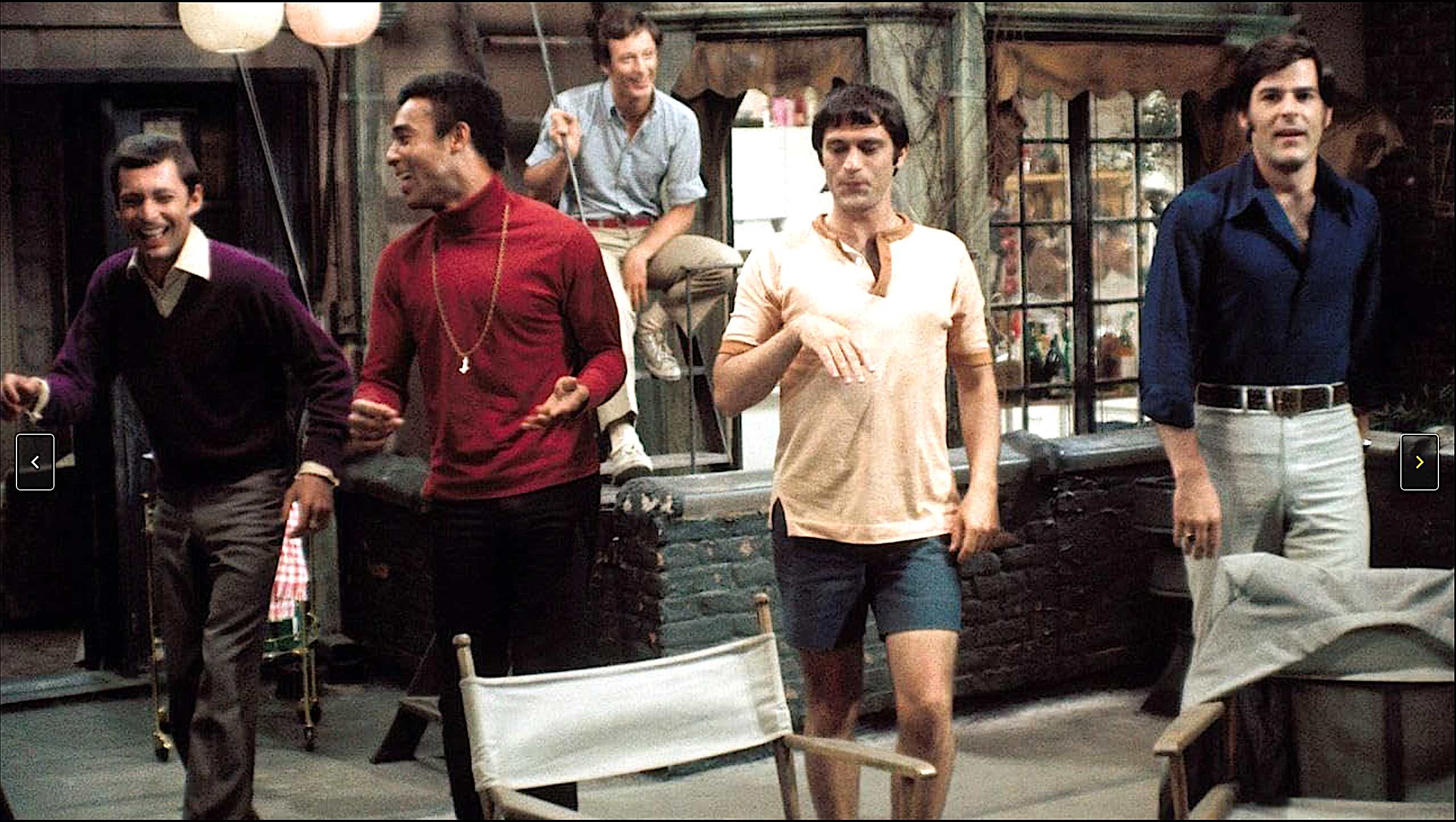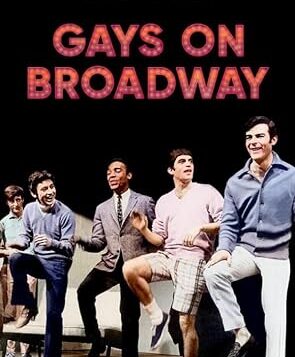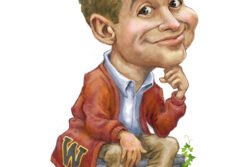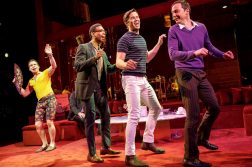 GENDER, SEX, AND SEXUALITY IN MUSICAL THEATRE
GENDER, SEX, AND SEXUALITY IN MUSICAL THEATRE
He/She/They Could Have Danced All Night
Edited by Kelly Kessler
Intellect, Ltd. 323 pages, $135.
“I’M TELLING YOU, the only times I really feel the presence of God are when I’m having sex, and during a great Broadway musical,” enthuses the rambunctious Father Dan to the eponymous hero of Paul Rudnick’s Jeffrey (1992). While the randy priest casually lists Lerner and Lowe, Tommy Tune, and eleven o’clock numbers among the tenets of his faith, he also cautions the emotionally distraught Jeffrey to remain clear-eyed about the reality of evil: “Phantom. Miss Saigon. Sunset Boulevard! Know ye the signs of the devil: overmiking, smoke machines, trouble with Equity.”
Writing at the height of the AIDS epidemic, when life had become “radioactive,” Rudnick promoted attending a good Broadway musical as one of the best ways to “lunge for any shred of happiness” in a dismal world, where psychic survival lies in performing “high kicks to heaven.” By linking arms with other combatants and dancing exuberantly in grand Rockettes style, one displays one’s defiance of the myopically judgmental moralists who touted AIDS as God’s vengeance on deviants. But even while seeking to promote an antidote to the crushing depression about AIDS that threatened to paralyze the gay community at the time, Rudnick highlighted an innate association between gays and theater. On some level, homosexuality has historically been a performance, whether because survival demanded that one attempt to pass as straight in a hostile world, communicating with other possible like-minded individuals through coded phrases, gestures or sartorial choices, or because one could unleash the fabulous diva within whose barbed quips wreak havoc on repressive, judgmental authorities.
I suspect that, were Father Dan an actual person able to read Ethan Mordden’s Gays on Broadway, he would make Mordden the new god of his idolatry. Mordden is hands down the single greatest historian of American theater, gay or straight. Stone cold sober, Mordden finds absolutely everything about theater fascinating—especially the near misses and offstage mishaps—and makes the reader who hasn’t seen most of the 389 (by my count) plays discussed in the book feel as though he or she has missed a fabulous party.
The governing idea of Gays on Broadway is that theater both reflects and challenges prevailing ideas about sexuality, indulging stereotypes even while undermining them. Like Mordden’s earlier, never-to-be-surpassed seven-volume history of the Broadway musical, Gays on Broadway is organized by decade, starting with the ready willingness of audiences in the 1910s to accept male actors headlining in female roles. Julian Eltinge was the highest paid performer of his day and, along with Bert Savoy, fashioned the persona of the bosomy, wasp-waisted woman who delivered some not very subtle double entendres, laying the groundwork for the stage persona that Mae West would later popularize to such devastating effect.
Indeed, so raucous was New York theater in the teens and twenties that conservative lawmakers passed a draconian measure mandating the padlocking of any theater sponsoring the display of “sex degeneracy or sex perversion” on its stage. Bert Savoy’s and Mae West’s style of outrageous double entendre was forced to take cover in the devilishly refined lyrics of Cole Porter and the drawing room comedies of Noël Coward. The infamous Wales Law had such a far-reaching effect that in the 1930s and ’40s, homosexuals could only be presented as predators to be vanquished or as confused innocents to be reclaimed into the heterosexual fold. Audiences were made so uncomfortable with the representation of gays on stage that even in the 1950s, when Tennessee Williams boldly sought to dramatize the complexities of sexual desire, he was forced to leave his gay characters offstage (Blanche’s young husband in Streetcar, Skipper in Cat, and the mysterious Sebastian Venable in Suddenly, Last Summer).
Stonewall and the Sexual Revolution of the 1960s brought dramatic pleas for understanding and sympathy in plays like The Boys in the Band and The Killing of Sister George, and, in the 1970s and ’80s, in “assertion plays” like Torch Song Trilogy and the musical La Cage aux Folles, in which the central character demands respect for his or her sexual difference. The Act I closing number from the latter, “I Am What I Am,” became something of a gay anthem. AIDS dominated gay playwriting in the 1980s and ’90s, investing gay drama with a newfound gravitas. So radical a shift in paradigms had occurred since Mart Crowley’s The Boys in the Band that in the opening decades of the 21st century, gays are not depicted as living in a ghetto but as another part of the social landscape, wrestling with the same problems as heterosexuals.

Such a compressed summary betrays the effervescence of Mordden’s book. Gays on Broadway is an insider’s history, filled with telling anecdotes that he must have picked up from conversations with innumerable stage managers, agents, and publicity managers, or acquired from years of reading every Playbill and theater review archived in the Billy Rose Collection at the Lincoln Center Library for the Performing Arts. For example, he reports that the sexual ambivalence of Bobby in Sondheim’s Company was actually modeled on actor Anthony Perkins (Psycho), one of Sondheim’s close friends and his collaborator in the fashioning of mystery games; that the film version of The Boys in the Band was shot in Tammy Grimes’ duplex; and that it was a comment by actress Marsha Mason (then the wife of play doctor Neil Simon, who’d been asked to attend a rehearsal) that saved a floundering A Chorus Line and made it into a smash hit. I particularly relished anecdotes concerning the comeuppances administered to homophobic theater critics Clive Barnes and John Simon.
Gays on Broadway is such a magisterial accomplishment that I feel ungracious for faulting the absence of any mention of Ed Bullins’ Clara’s Old Man and Tennessee Williams’ swan song, Something Cloudy, Something Clear. But the latter points to a serious deficiency in Mordden’s history. Although he supplies an intelligent overview of the career of Edward Albee in his coda celebrating Albee as the great gay American playwright, his failure to cover the later plays of Williams is part of a larger failure to give Williams his due.
PERHAPS the most remarkable quality of Gays on Broadway is that Mordden’s unparalleled, encyclopedic knowledge of stage history is delivered in such a tart, breezy style, making for delicious reading. Would that some of the essays collected by Kelly Kessler in Gender, Sex, and Sexuality in Musical Theatre—twelve of which were previously published in the scholarly journal Studies in Musical Theatre, with five written expressly for this volume—were as engagingly written and smelled less of the lamp. (For example, the editor promises that one group of essays “negotiates various takes on codified notions of the gender binary” by “rejecting any notion that musical theatre has frozen hegemonic gender norms into sonic and performative amber.” Whew!)
Among the collection’s highlights is a deft exposure of Noël Coward’s boldness in presenting in Words and Music (1932) a line of eighteen chorus boys that proved so homoerotically alluring that English theater companies thereafter were at pains to protest the heterosexuality of the male singers-dancers. There’s also an analysis of how music and dance allow adolescents to express sexual desire in Spring Awakening. And there’s an examination of the extent to which the musical Billy Elliot challenges gender roles not simply by depicting a working-class boy who wants to dance, but by having male adolescent actors play the part (rather than an adult female, such as Mary Martin or Sandy Duncan as Peter Pan).
I particularly enjoyed the arc of essays exploring the excesses of the divas (whether stage characters like Ethel Merman’s Rose, Angela Lansbury’s Mame, and Elaine Stritch’s Joanne, or over-the-top female stage personalities like Carol Channing and Tallulah Bankhead) as commentaries on the social constraints placed on women. I appreciated Elizabeth Wollman’s analysis of the paradox that even as the adult musical of the 1960s and ’70s employed nudity and sexual frankness in the attempt to foster both Gay and Women’s Liberation, it relied so heavily on stereotypes and nudity that it devolved into mere exploitation. Likewise, the editor’s own survey of how the visibility of LGBT experience in musicals like La Cage aux Folles, Kiss of the Spider Woman, Fun Home, and The Prom was undercut by marketing campaigns that downplayed the shows’ queerness.
Thus, several of this collection’s essays demonstrate just how high toward heaven the musical has allowed gays to kick. All the greater pity that the collection did not benefit from sharper-eyed copyediting (Merman’s iconic character is referred to as both “Mama Rose” and “Momma Rose”), and by the inclusion of an index, essential in such a large collection of essays designed for a scholarly audience.
Raymond-Jean Frontain’s most recent book is Conversations with Terrence McNally.






